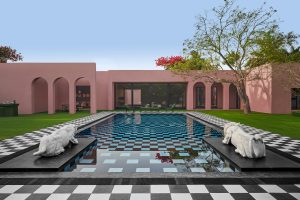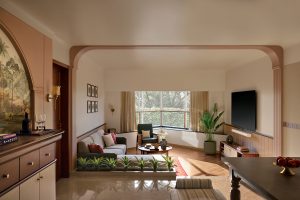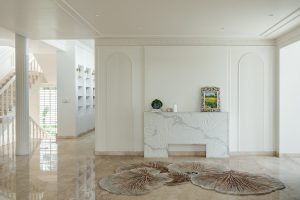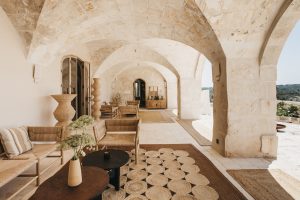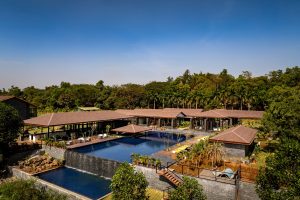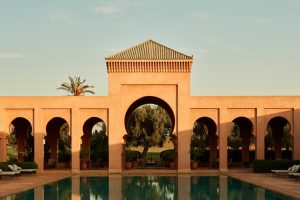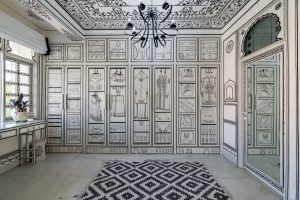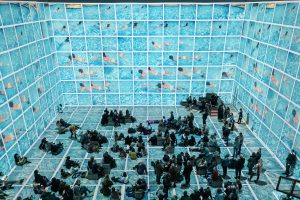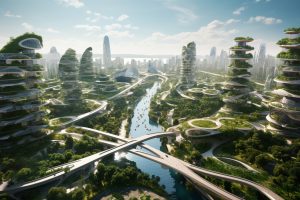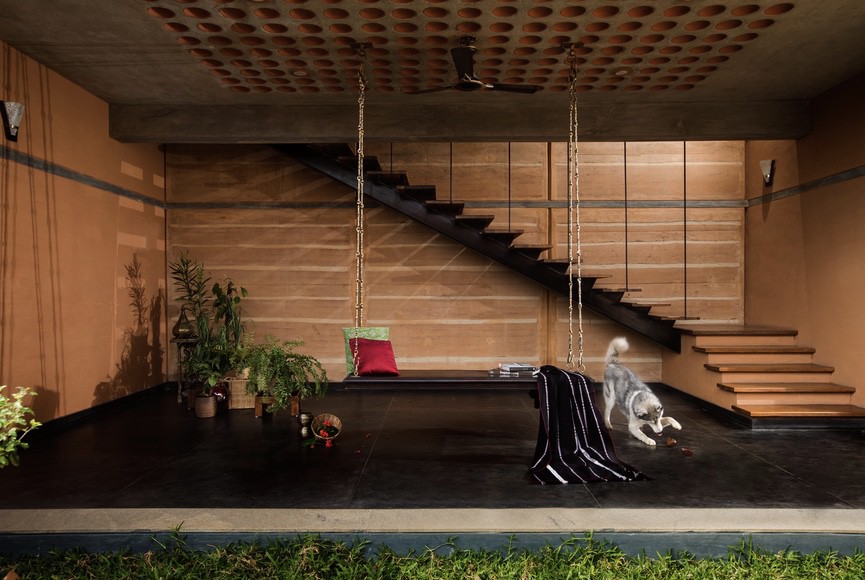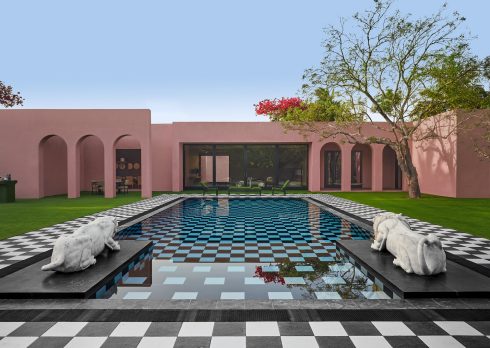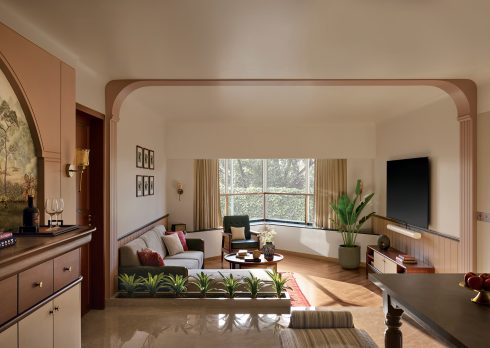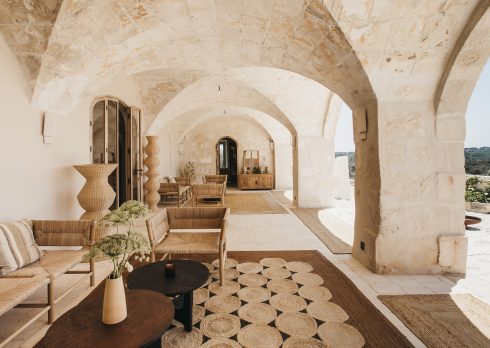Highlighting Mud Architecture – Four Indian Studios Championing Sustainability
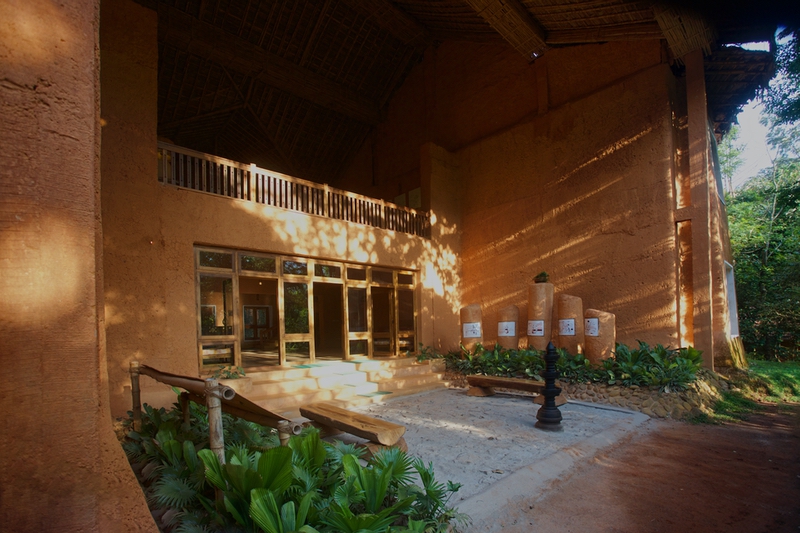
When one thinks of mud architecture, images of rural landscapes are automatically conjured up by the subconscious. Rarely is this material associated with modernity, as one that would fit into the context of contemporary architecture. Fortunately, a return to organic materials and forms of construction is on the rise amongst Indian architecture firms. While mud comes with a set of limitations, it is thoroughly energy efficient in comparison to building materials like bricks, concrete, cement and steel. Even though Indian cities are moving towards an era of fast constructing modernisation to find its place in the global scheme of things, several architectural studios in the country are modelling their practices in an endeavour to give back to nature what we have been vehemently taking for years. These studios take into account the regional architecture of a place to understand the context, climate, and materials used to suit the needs of that region.
Design Pataki spoke to four architectural studios which champion sustainable construction and the use of mud and organic materials as a means of getting there –
1. Put Your Hands Together, Mumbai
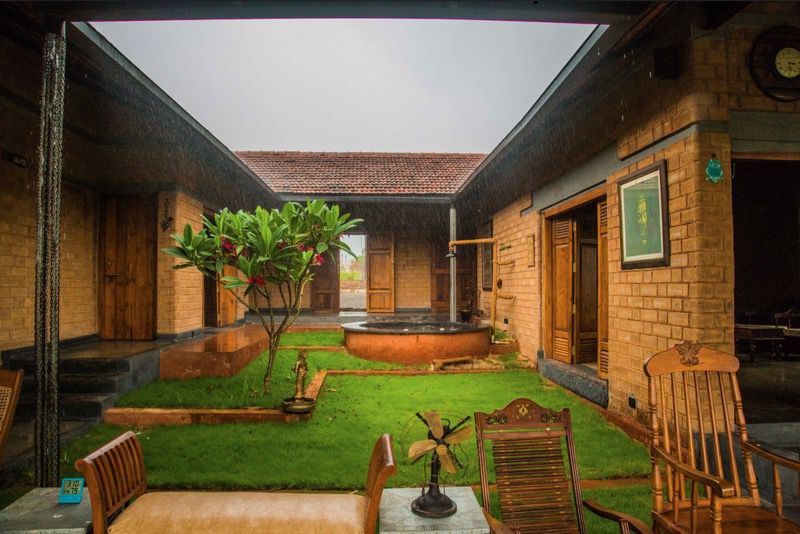
Founded by Areen Attari and Shaveer Irani, Put Your Hands Together (PYHT) is a bio-architecture firm that designs within the eco-system, engages with the community and builds with local and natural materials. They focus on learning traditional methods of construction and innovatively implementing them.
Areen Attari on –
The challenges of constructing with mud
“I think the biggest challenge, in my opinion, would be – the people who are close-minded about it and who live in a sort of myth that this is a poor person’s material. There’s is a lot of stigma associated with that, so I would love for that to be sort of broken, not to have so much resistance when coming up with new ideas. Getting inspired by old ideas and reintroducing it. So it’s the resistance from a lot of people that has been challenging in that sense, but it also makes it merrier.”
On the importance of geographical context in architecture
“We try and understand the traditional, vernacular architecture to see how the people have built in the years gone by. People have a good understanding of the context, climate, material and they would design and build their homes to suit the needs of that region. So, we try to use that as our learning in order to see if we can do something – not exactly like that – but to use that as our base for our design, to evolve a new form of architecture and use mud in more inventive ways.”
2. Center for Sustainable Built and Natural Environment, Kerala

The Center for Sustainable Built and Natural Environment is founded by Eugene Pandala a veteran architect well-known for his vernacular designs and his approach to environmentally friendly construction.
Eugene Pandala on –
Traditional mud architecture through the ages
“Techniques for building with mud are almost everywhere. They exist in places where there are earthquakes like in Japan – they use mud, but they use different techniques like wattle and daub. And even in the monasteries of the Himalayas, they use mud along with stone and timber. They combine all these materials and work it out so that it is viable. In Bihar too, you can find a lot of buildings made partially in mud and timber. It’s all local materials – whatever is available. All of this has been carried on for generations. In every village in India, things are done differently with mud. That is the variation you can find because of the locational advantages and disadvantages. Even in other countries, most of the old structures are made in mud. They used to build heavy thick walls for proper insulation. All modern architecture is just about 100 years old, not more than that. Before that, all historical buildings were a hundred percent sustainable, there was no need for certification. That’s the beauty.”
Arguments against the sustainability of mud architecture
“Everything is mined from the earth. Even the silica for glass is mined. But most construction materials are altered. When you change the natural material into something else, it requires a lot of energy. So to make concrete, for example, you need cement which is also partly made from elements in the earth. You use coal to burn it and you use a lot of energy to transform it. But materials like lime and mud are naturally occurring, and you can use it without altering it. So when it decomposes, it doesn’t cause any environmental problems when it goes back to the earth. It’s not just about building, it’s about building sensibly.”

3. Masons Ink Studio, Bangalore
Masons Ink Studio, founded by Rosie Paul and Sreedevi Changali is a ‘people’ oriented design and construction firm. With a strong foot on Research and Development, they are humanitarians striving to promote sustainable architecture and innovative use of natural materials.
Rosie Paul and Sreedevi Changali on
Earth architecture in India in comparison with the world
“The beauty of mud is also the versatility of it – this is proved in the vast use of this material in the vernacular language worldwide. The different techniques employed in earthen construction helps it respond to different climates, contexts and cultures. India is a country with varied geographies and cultures are fortunate to find a wide array of both quaint and grandiose earthen architecture that boasts of a vast array of construction nuances and textural palettes.”
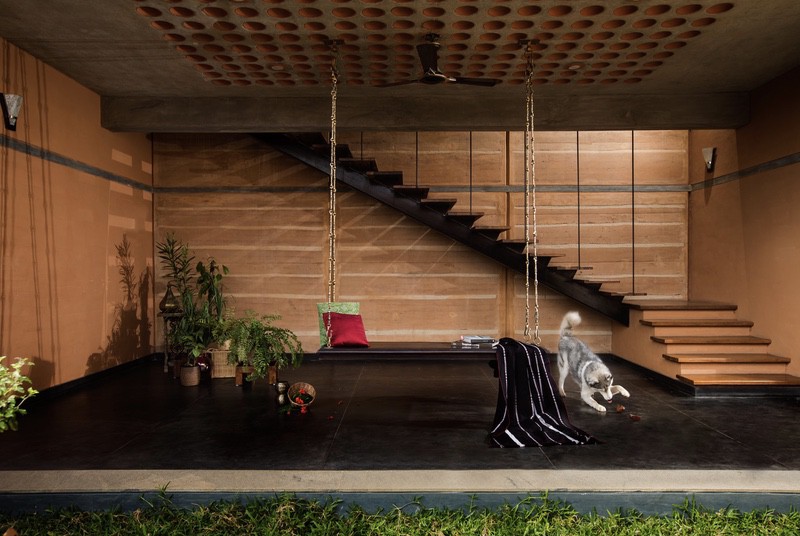
The relevance of earth architecture as India moves towards rapid modernisation
“The construction industry is one of the most polluting industries in the world and India is a country guaranteed to see a large amount of development in the coming years. It is crucial that we look into greener and cleaner construction materials. Mud is one such material that is durable, natural and non-toxic, and that has proved itself time and time again. It has seen numerous innovations in order to respond to the challenges of today including prefabrications and 3d printing.”

4. Dustudio, Auroville
Dustudio is an interdisciplinary architectural studio based in Auroville. Started by Dharmesh Jadeja, the studio focuses on strengthening the traditional Indian construction by understanding, developing and innovating with locally available materials around the context of environmental and social impacts.
Dharmesh Jadeja on –
What inspired his use of mud in architecture
“I come from the Saurashtra region of Gujarat, and all over Saurashtra, there are cities and monuments built with local stones and traditional resources. I have lived in and seen these technologies, survive the test of time, withstand disasters and adapt to generations of families. The wood and earth architecture of the Bhal region of Gujarat, the houses and mansions of all scales, was fascinating in my growing years; not to speak of their environmental adaptiveness. The regional adaptations and their integral quality of being adaptive to several religions and lifestyles were a fascinating learning experience.
So when I came to Auroville in the early 90s, I wanted to centre my work around its context, local skills and traditions – earth architecture being one in Southern India.”
On the consumerist culture
“Nothing we are consuming, the mindless consumerism and completely non-conscious lifestyles, are sustainable; even in the short term. We have seen that the most resilient systems are our traditional systems; be it food, shelter, clothing, transport, etc. We have to step back and think again, be humble to our environment and earth, and learn from our past mistakes over 5 to 6 decades of mindless consumption-based growth. We have to learn to live, simplify, localise and learn to be humble, in all possible ways.”

